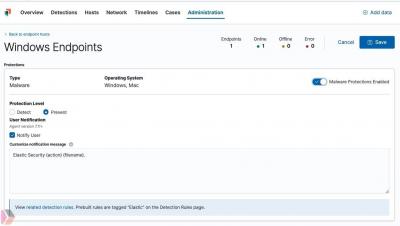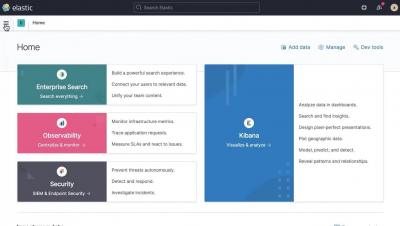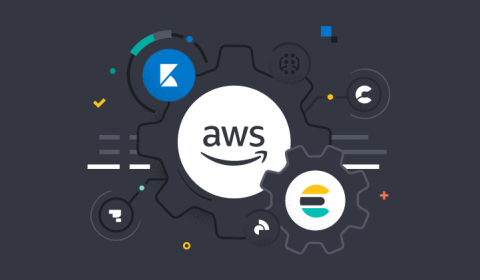Operations | Monitoring | ITSM | DevOps | Cloud
Elastic
Validating Elastic Common Schema (ECS) fields using Elastic Security detection rules
The Elastic Common Schema (ECS) provides an open, consistent model for structuring your data in the Elastic Stack. By normalizing data to a single common model, you can uniformly examine your data using interactive search, visualizations, and automated analysis. Elastic provides hundreds of integrations that are ECS-compliant out of the box, but ECS also allows you to normalize custom data sources. Normalizing a custom source can be an iterative and sometimes time-intensive process.
Getting to know Kibana
How to manage Elasticsearch data across multiple indices with Filebeat, ILM, and data streams
Indices are an important part of Elasticsearch. Each index keeps your data sets separated and organized, giving you the flexibility to treat each set differently, as well as make it simple to manage data through its lifecycle. And Elastic makes it easy to take full advantage of indices by offering ingest methods and management tools to simplify the process.
Detecting threats in AWS Cloudtrail logs using machine learning
Cloud API logs are a significant blind spot for many organizations and often factor into large-scale, publicly announced data breaches. They pose several challenges to security teams: For all of these reasons, cloud API logs are resistant to conventional threat detection and hunting techniques.
Elasticsearch caching deep dive: Boosting query speed one cache at a time
Cache is king for speedy data retrieval. So if you’re interested in how Elasticsearch leverages various caches to ensure you are retrieving data as fast as possible, buckle up for the next 15 minutes and read through this post. This blog will shed some light on various caching features of Elasticsearch that help you to retrieve data faster after initial data accesses.
Elastic searchable snapshots or AWS UltraWarm: Making the right choice
Your logs, metrics, security, and trace data are all invaluable to you. They are mission critical for your observability and security needs. As your IT infrastructure grows and keeps generating more and more data, your data volumes and data storage needs go up accordingly. It can quickly become cost-prohibitive to indefinitely store all of it on your hottest machines.
Elastic + Grafana Labs partner on the official Grafana Elasticsearch plugin
Today, I’m happy to share more about our partnership and commitment to our users that they will have the best possible experience of both Elasticsearch and Grafana, across the full breadth of Elasticsearch functionality, with dedicated engineering from both Grafana Labs and Elastic. Through joint development of the official Grafana Elasticsearch plugin users can combine the benefits of Grafana’s visualization platform with the full capabilities of Elasticsearch.
Analyzing Elastic Workplace Search usage in a Kibana dashboard - part 2
For the 7.10 release of Elastic Workplace Search, we highlighted some of the new analytics logging capabilities and took you through a short walkthrough of some sample analysis scenarios. With the 7.11 release we introduced analytics fields, which open up new possibilities for exploring query and click data with helpful dashboards and visualizations.
Elastic Cloud subscription and billing enhancements come to AWS Marketplace
We are excited to bring you a number of updates for using Elastic Cloud (Elasticsearch managed service) in the AWS Marketplace.









